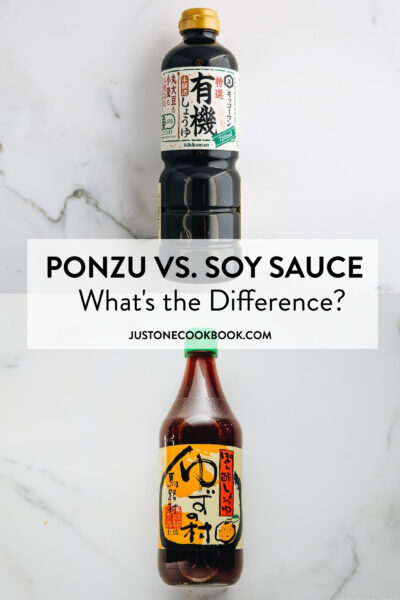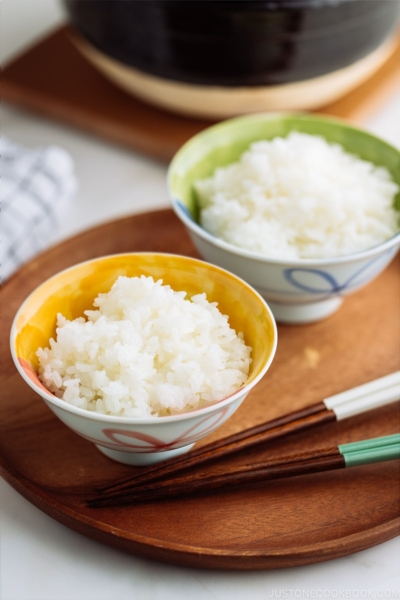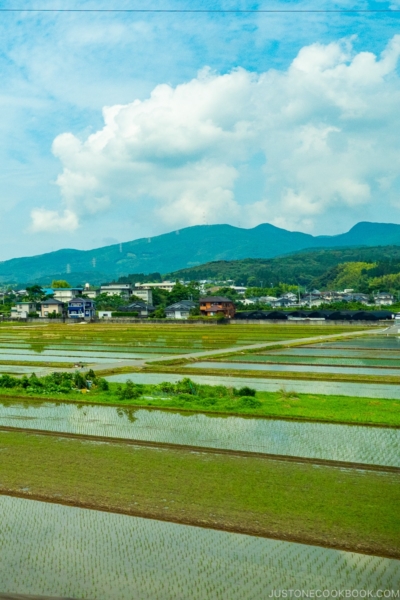From soba, somen, udon, and harusame, explore the world of Japanese noodles and how to incorporate them into your meals!
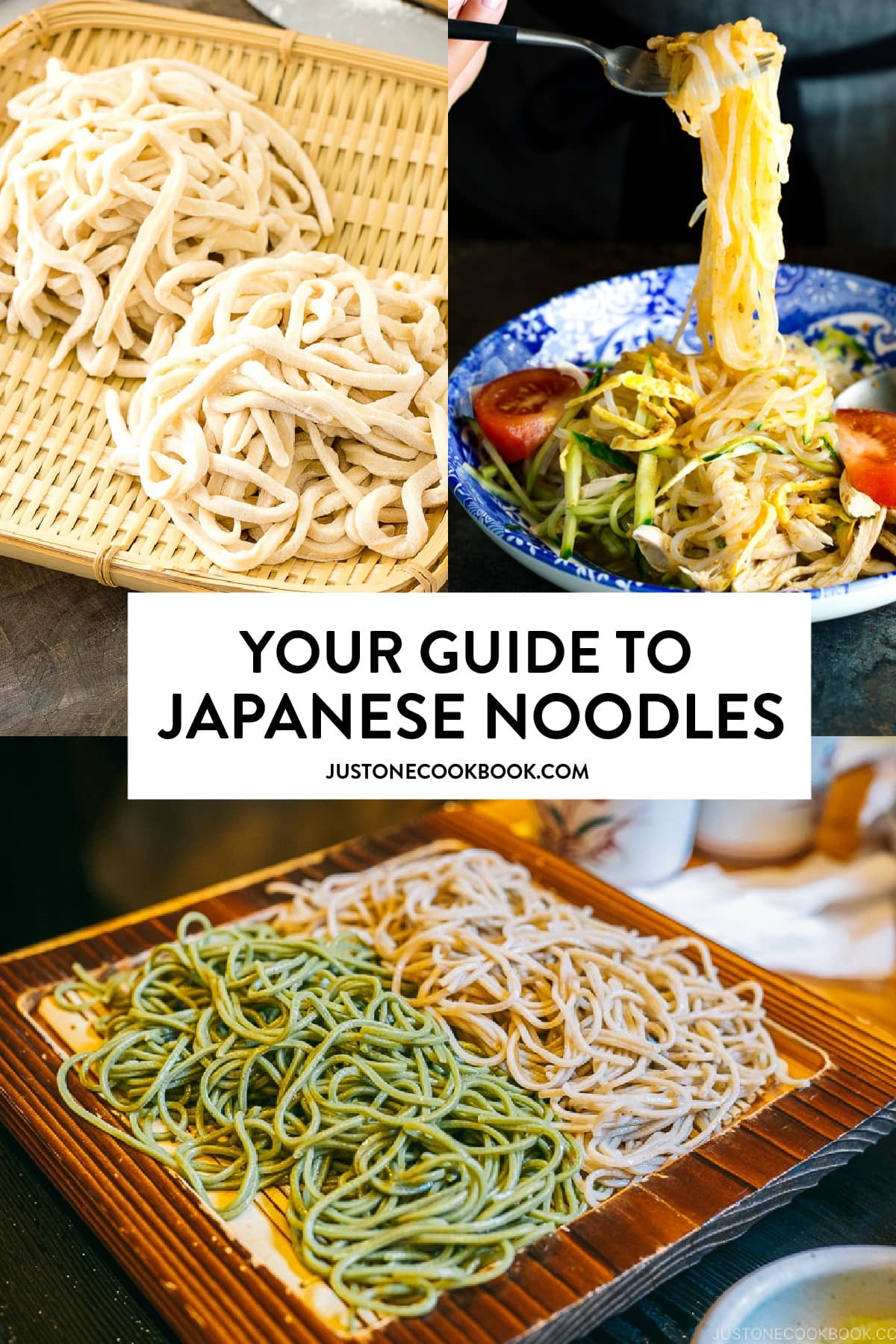
Japanese cuisine boasts a rich noodle culture, with various noodles starring in beloved dishes. They come in different shapes, sizes, and textures, offering a spectrum of tastes and culinary experiences. From the world-famous ramen to the delicate somen and the earthy soba, each type of Japanese noodle brings a unique character to the table.
Sometimes we serve the noodles hot in a bowl of dashi broth, cold with dipping sauces, and sometimes in an aromatic curry sauce. You’d be amazed by the range of preparation methods, regional variations, and the artistry that goes into noodle-making—each contributing to the nuanced tapestry of Japanese gastronomic traditions.
In this guide, we’ll explore the delicious world of Japanese noodles, including recipes on how to cook with them and tidbits on eating etiquette.
Table of Contents
Different Types of Japanese Noodles
I’ll cover common Japanese noodles that you can typically find at a Japanese grocery store, Asian markets, or online.
There are many more that aren’t included here, including regional and lesser-known varieties that may be difficult to find outside Japan.
Soba Noodles
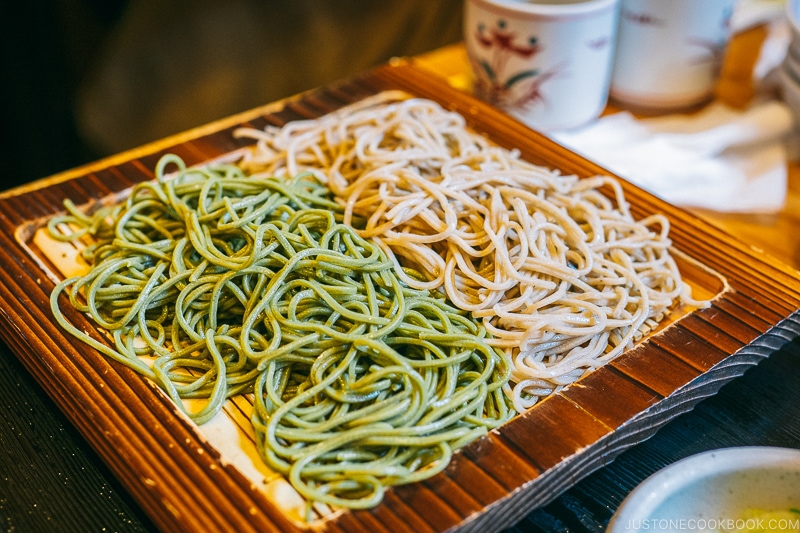
Soba noodles (蕎麦) are made of buckwheat flour or a combination of buckwheat and wheat flour (sometimes a binder like mountain yam). They are typically light to dark brown, with an earthy and nutty flavor. The soba crop was historically grown in cold mountainous regions where it was difficult to grow rice. Soba making requires years, if not decades, of mastery, as the dough is brittle and difficult to work with.
The Japanese eat these buckwheat noodles year-round, especially during New Year’s Eve, for a special dish called Toshikoshi Soba.
📖 For further reading: What is the Difference Between Soba and Udon Noodles
Where to Buy Soba Noodles
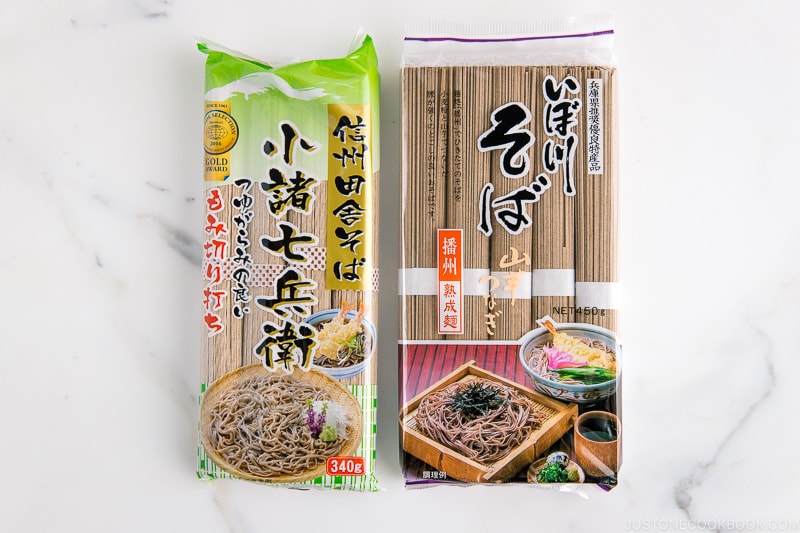
You can find them available fresh or dried. Soba noodles made with 100% buckwheat tend to be more expensive than those with a blend of buckwheat and wheat flour but are also more nutritious and flavorful.
Check out your local Japanese and Asian grocery stores, the international food aisle of local grocery stores, and Amazon. For gluten-free soba noodles, get this one.
Recipes Using Soba Noodles
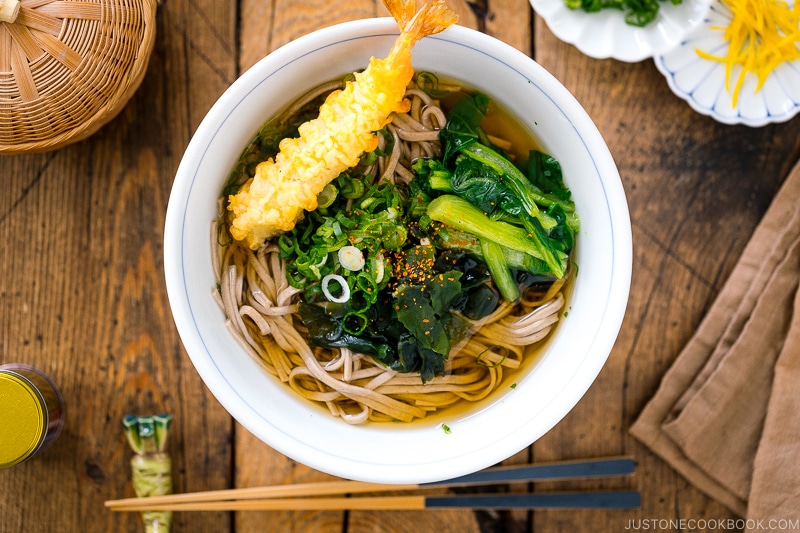
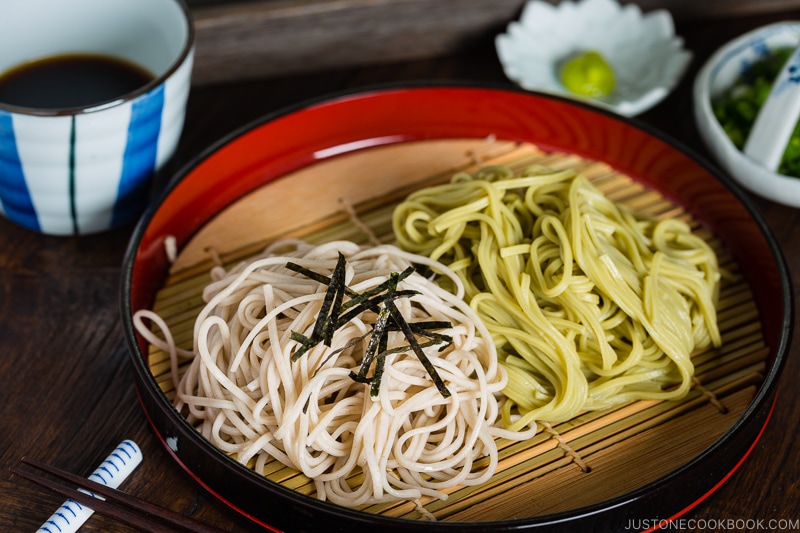
- Soba Noodle Soup – It takes only 30 minutes to make this comforting noodle soup, and you can customize the toppings with ingredients you have on hand.
- Zaru Soba (Cold Soba Noodles) – Synonymous to Japanese summertime, this dish is about savoring the earthy texture of the soba noodles.
- Oroshi Soba – Served in a savory dashi-based sauce, the chilled buckwheat noodles are topped with grated daikon, shredded nori seaweed, and green onion.
- Soba Noodle Salad – Tossed in a honey-soy dressing, this salad can be enjoyed chilled or at room temperature. Feel free to bulk it up with a choice of protein, like shredded chicken, grilled tofu, or shredded egg.
Udon Noodles
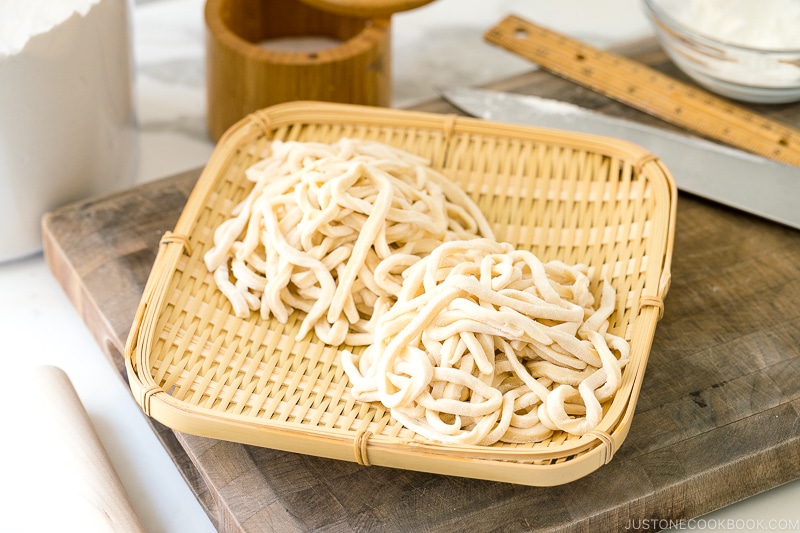
Udon noodles (うどん・饂飩) are wheat noodles known for their soft, chewy texture and neutral flavor. There are regional styles of udon, varying in thickness, cut, and soup base. Enjoy them cold, hot, stir-fried, or add to hot pot dishes.
Udon is available fresh, dried, or frozen. Unlike soba, which requires years of mastery, you can make homemade udon without special equipment or tools! Nami even has a video demonstrating how to make udon. It’s super fun, so we hope you give it a try.
📖 For further reading: What is the Difference Between Soba and Udon Noodles
Where to Buy Udon Noodles
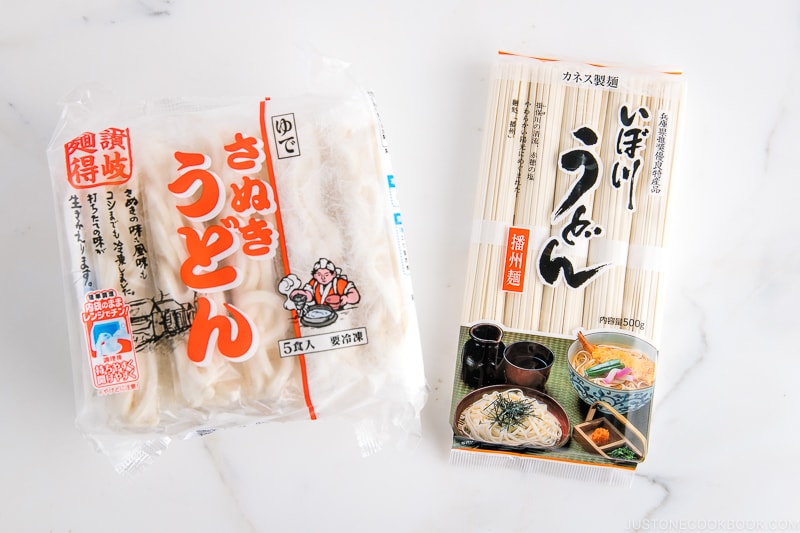
You can find them available frozen or dried. Check out your local Japanese and Asian grocery stores, the international food aisle of local grocery stores, and Amazon.
Recipes Using Udon Noodles
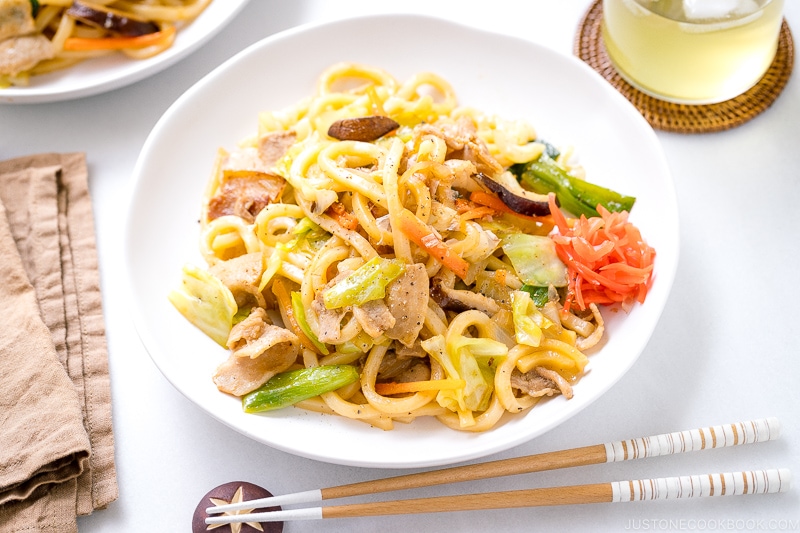
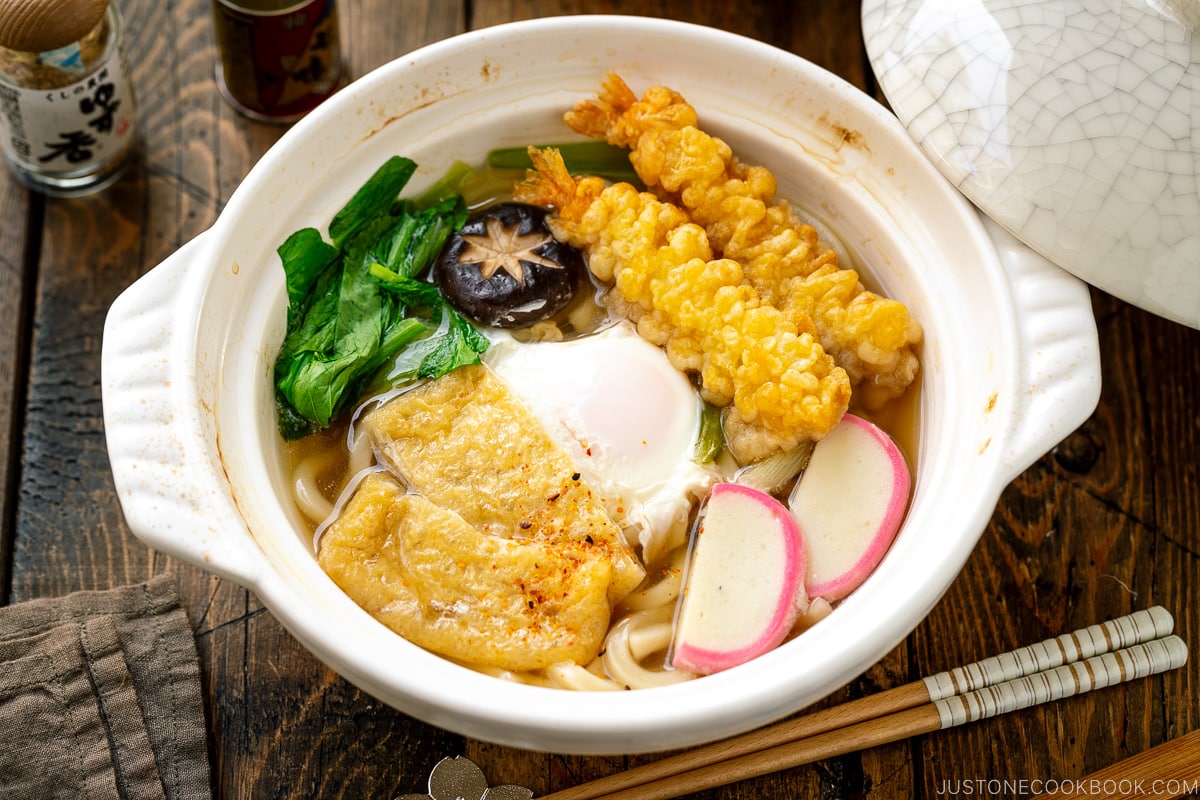
- Kitsune Udon – This simple udon noodle soup is so soothing and simple to put together.
- Yaki Udon (Stir-Fried Udon Noodles) – This favorite noodle dish features slippery udon, savory sauce, crisp vegetables, shiitake mushrooms, and slices of seared pork. But, you can easily turn it into vegetarian/vegan!
- Nabeyaki Udon – Served in an individual clay pot, Nebayaki Udon is a wintertime staple in Japan.
Ramen Noodles
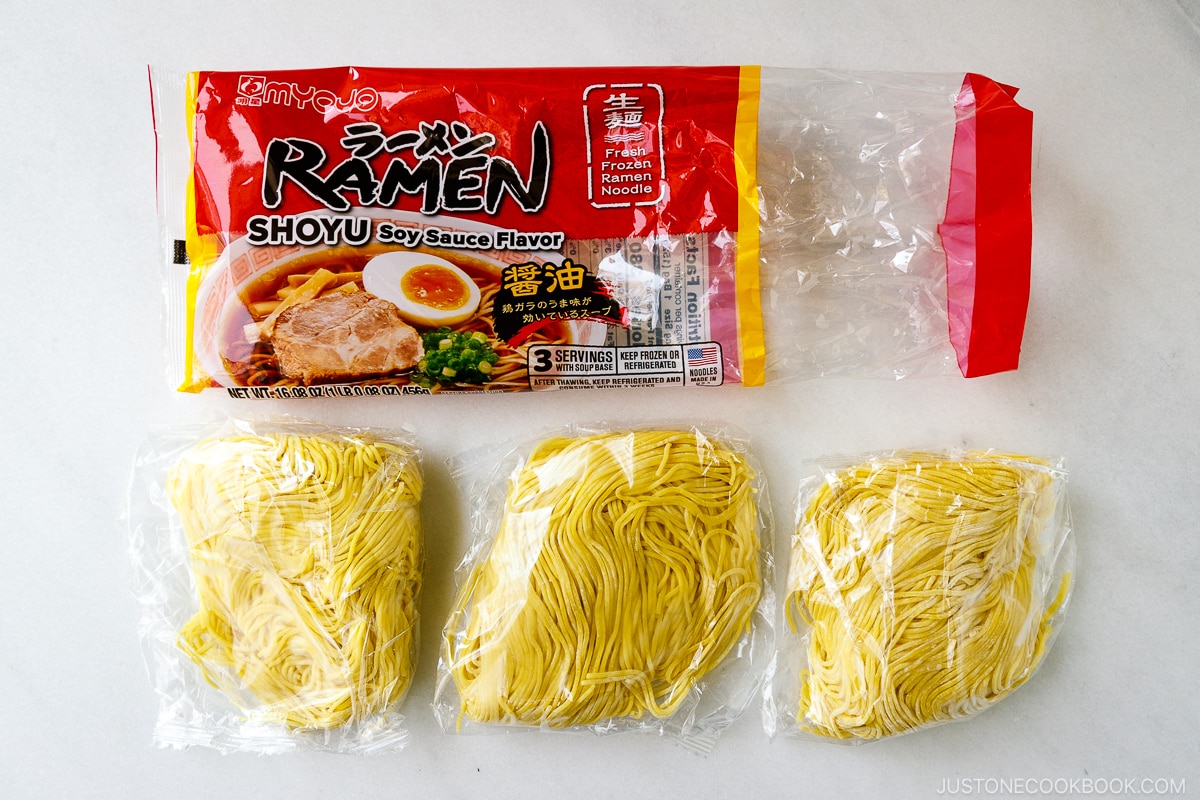
Ramen noodles (ラーメン) are a type of Chinese-style wheat noodle. They contain four ingredients: wheat flour, salt, water, and an alkaline agent (kansui かん水). Kansui inhibits gluten development and reduces acidity in the dough, adding elasticity to the noodles. As a result, ramen noodles have the characteristic “bite” and pale yellow color.
📖 For further reading: Japanese Ramen Guide: Types of Ramen
Where to Buy Ramen Noodles
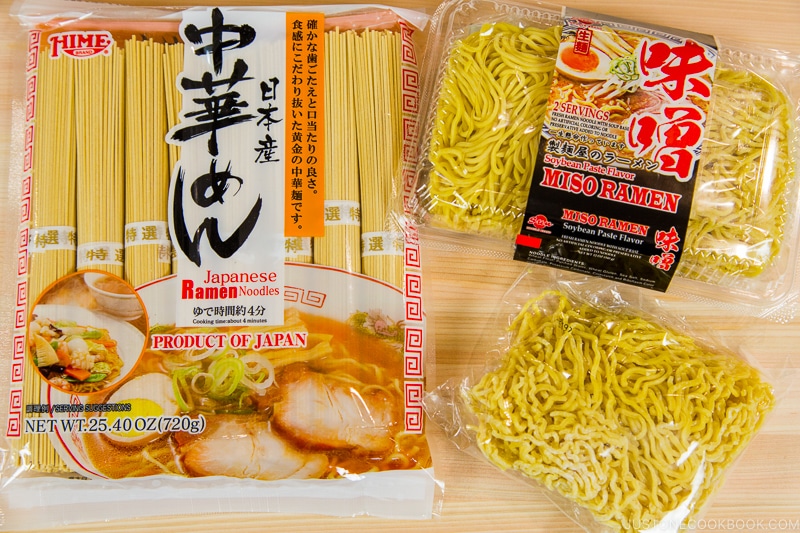
If you live in the US, we recommend using fresh ramen noodles from Sun Noodles. Alternatively, you can use the dried ramen from HIME Japanese Ramen Noodles on Amazon. For gluten-free ramen noodles, this is our favorite.
Check out your local Japanese and Asian grocery stores, the international food aisle of local grocery stores, and Amazon.
Recipes Using Ramen Noodles
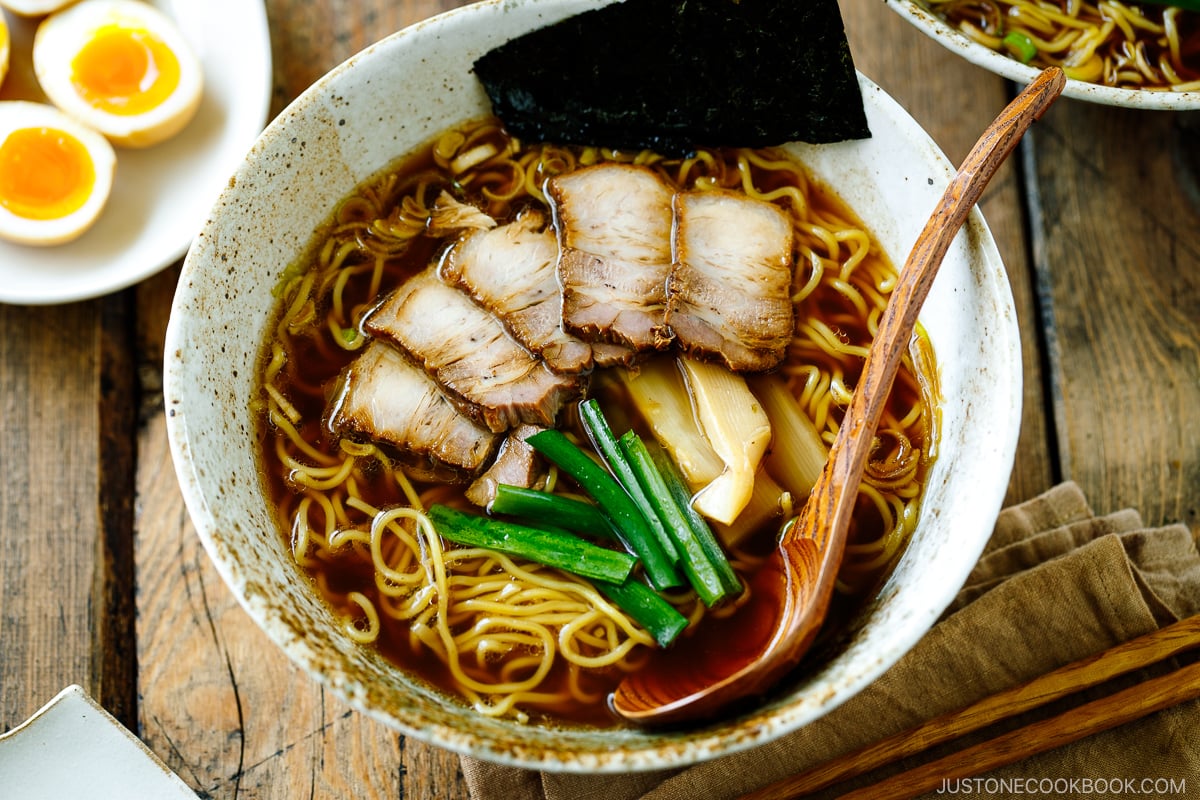
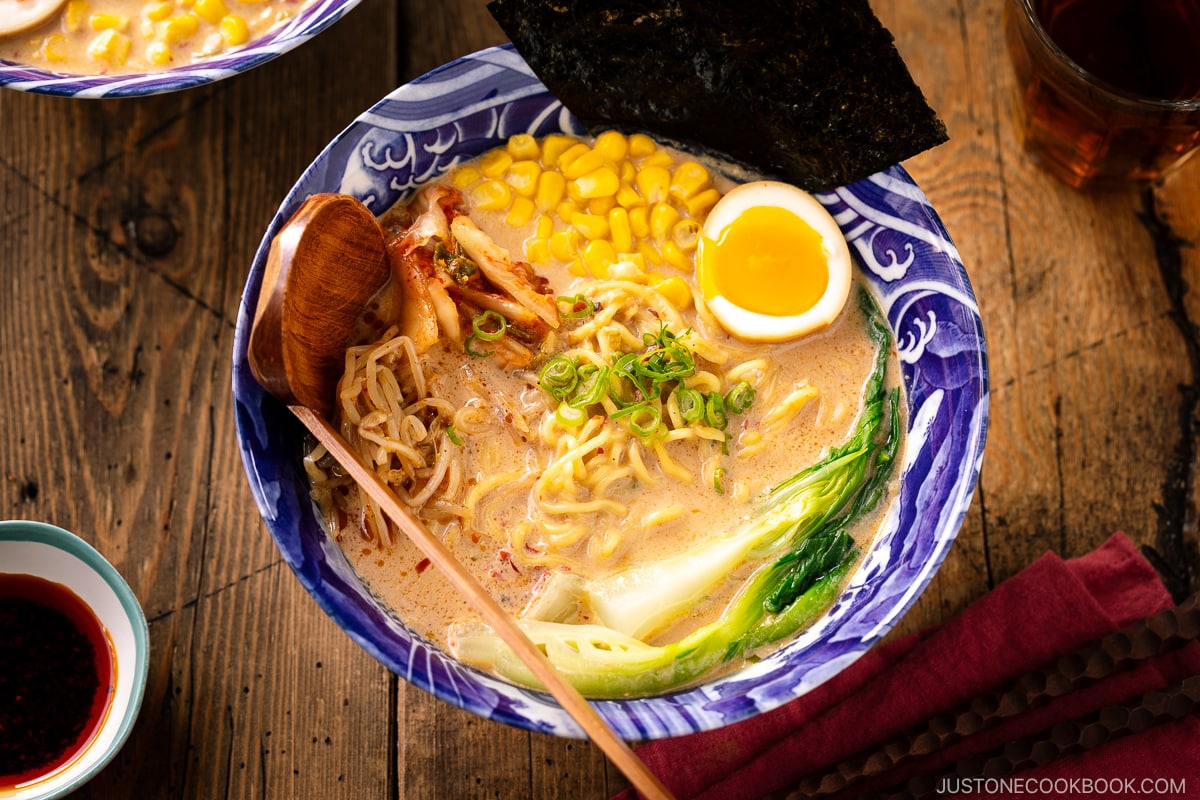
Check out our collection of authentic ramen recipes that you can easily make at home!
Somen Noodles
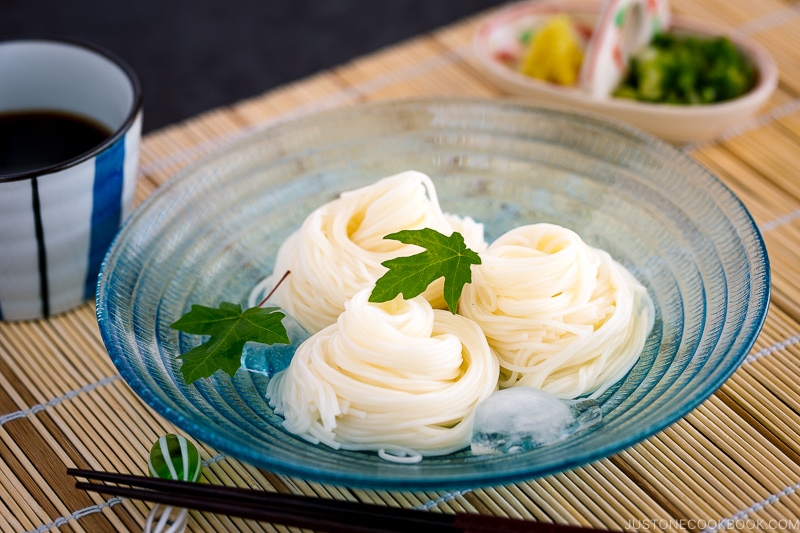
Somen noodles (素麺) are thin noodles made from wheat flour, salt, and water. They are created by stretching the wheat dough with vegetable oil, forming thin strands, and then air-drying them. Noted for their delicate and slender appearance, often described as fine, white strands, somen noodles can be enjoyed hot or cold, but they are most commonly associated with Japanese summertime food.
Where to Find Somen Noodles
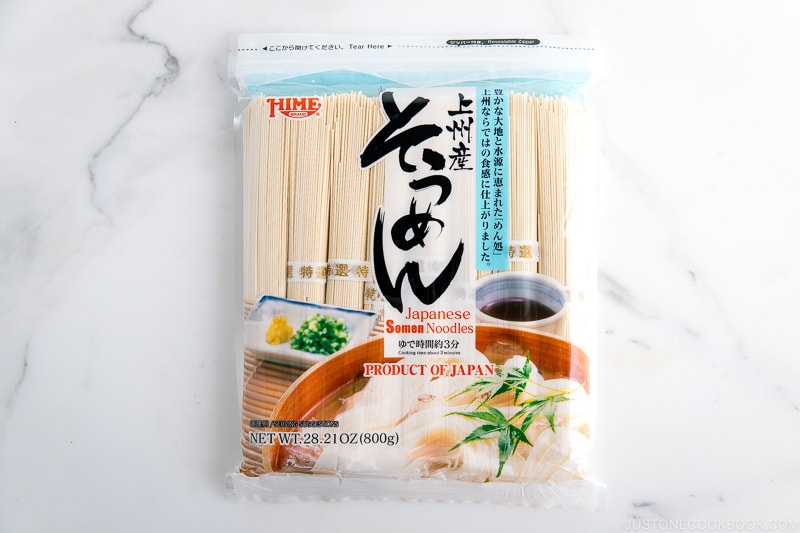
Somen is available dried. Check out your local Japanese and Asian grocery stores, and Amazon.
Unlike soba and udon, it only requires 1-2 minutes to cook, making it the perfect choice when you’re pressed for time.
Recipes Using Somen Noodles
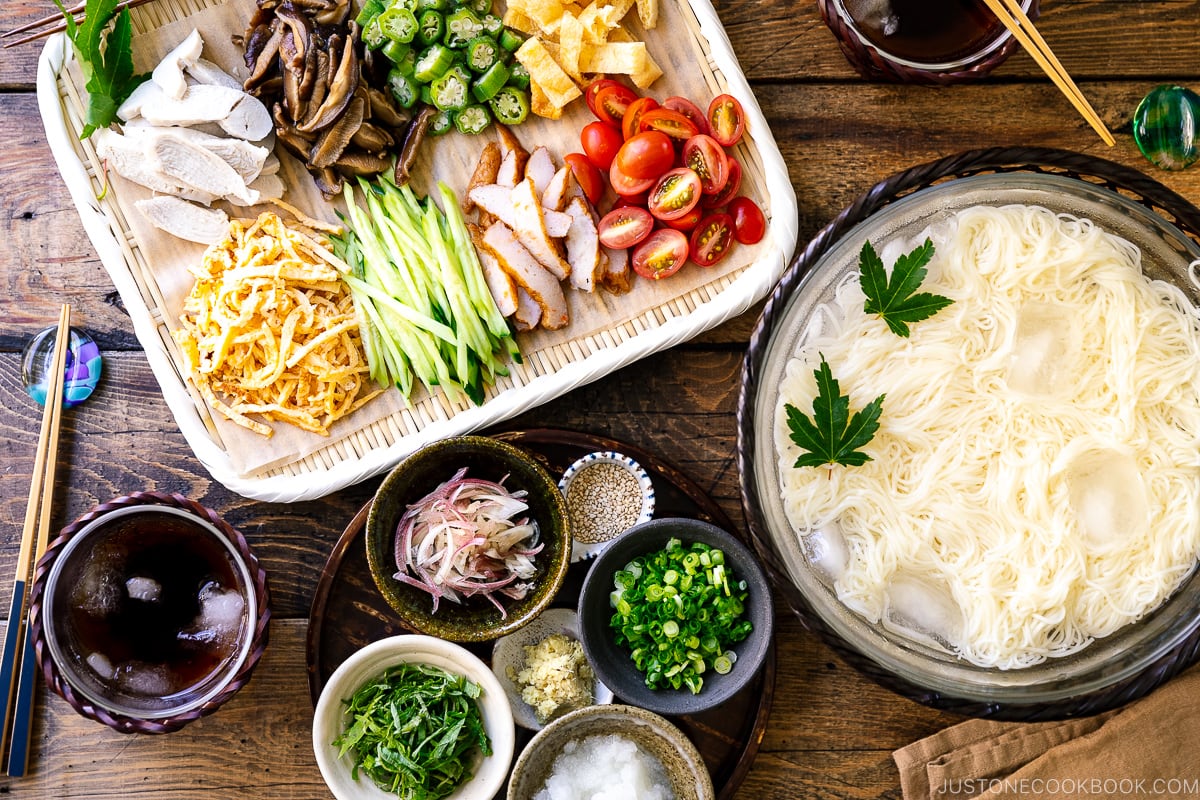
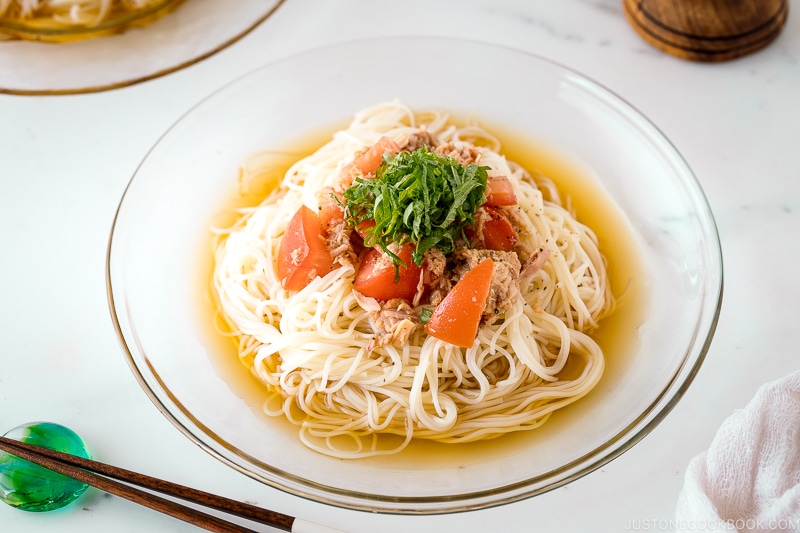
- Japanese Cold Somen Noodles – This is the best kind of noodle dish to enjoy on hot summer days! There are endless ways to serve it too, so you can enjoy it over and over again.
- Cold Tuna and Tomato Somen – You can throw this together in a breeze with pantry-ready ingredients.
- Somen Noodle Soup (Nyumen) – Cooked in a delicious dashi broth and filled with nutrient-rich ingredients, this is another noodle soup to love.
- Cold Somen Noodles with Sudachi Lime – Looking for a unique way to enjoy somen? Try this refreshing recipe!
Shirataki Noodles
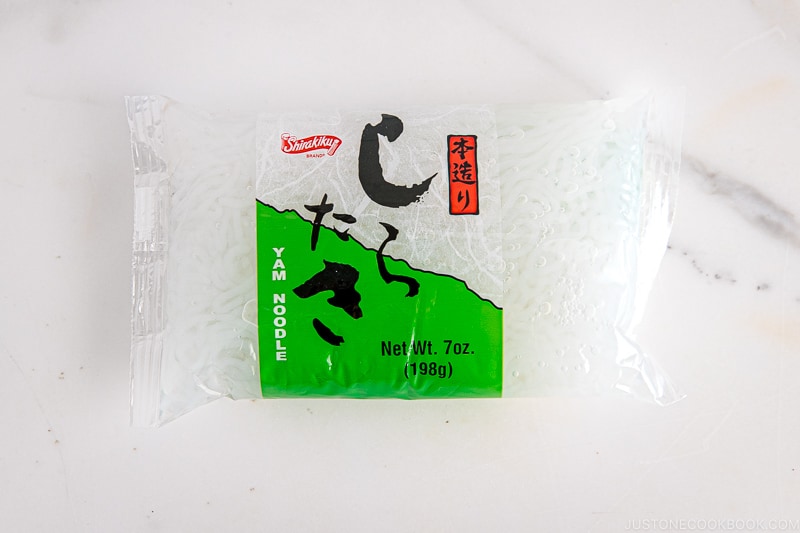
Shirataki noodles (しらたき・白滝) are made from konjac yam (AKA devil’s tongue yam or elephant yam). These noodles are unique because they are low in calories and carbohydrates and high in fiber, making them a popular choice for those following low-carb, ketogenic, and gluten-free diets.
Where to Buy Shirataki Noodles
They are sold either packed in water or dried. Check out your local Japanese and Asian grocery stores. Outside Japan, you may find varieties beyond traditional shirataki noodles, such as macaroni, fettuccine, and other pasta shapes.
Shirataki noodles soak up flavors and retain their shape even with prolonged cooking, making them a great addition to hot pot and simmered dishes. However, you can certainly use them in stir-fries or salads!
Recipes Using Shirataki Noodles
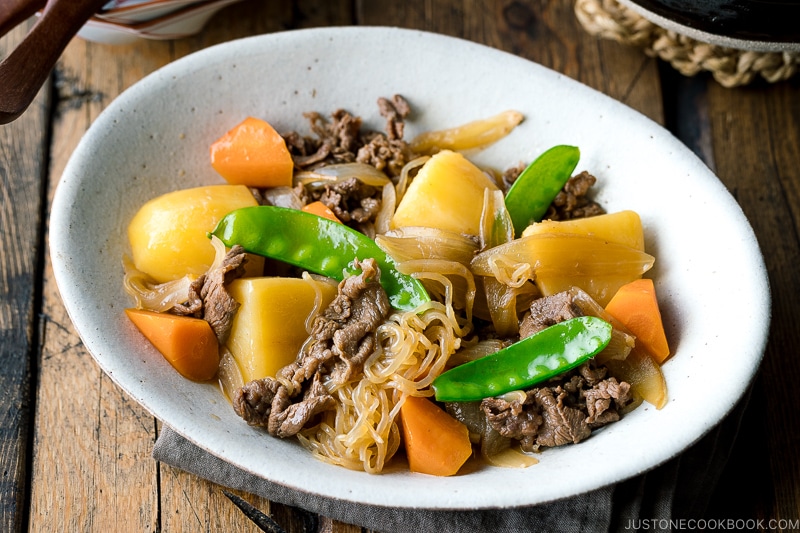
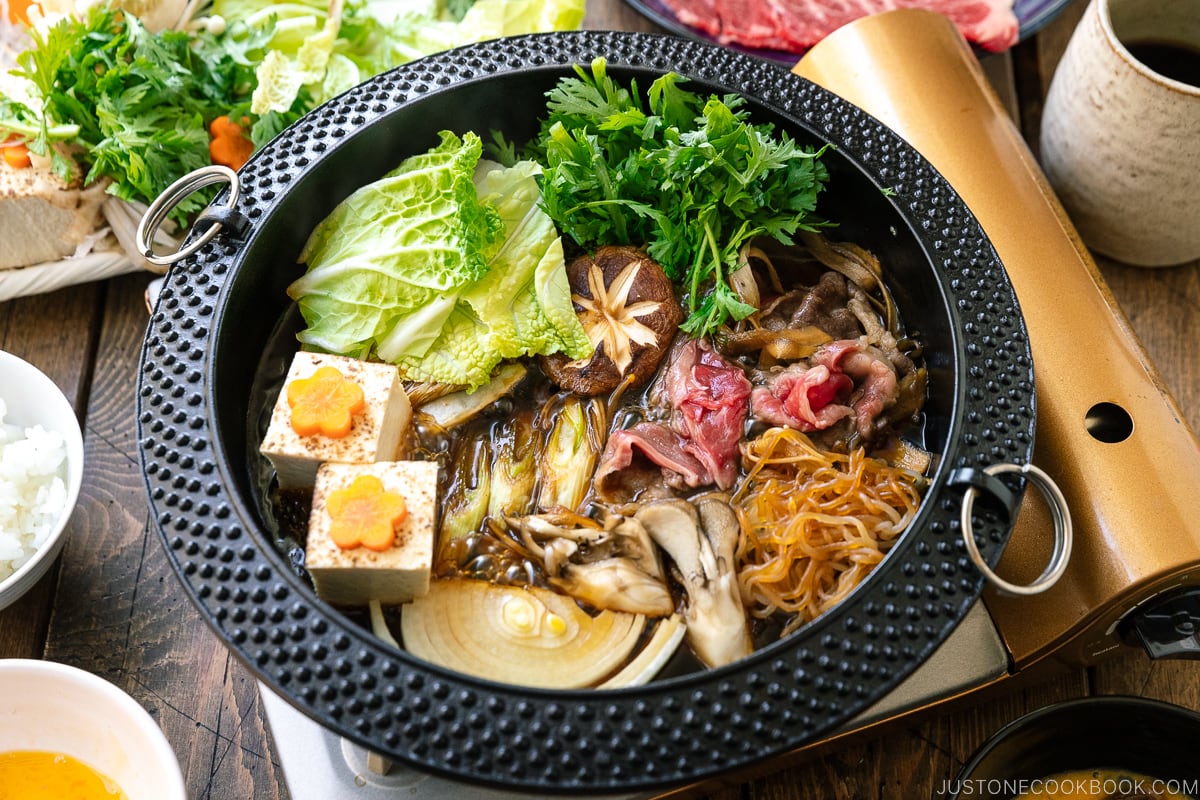
- Nikujaga (Japanese Meat and Potato Stew) – This classic homestyle dish has all the flavors that will remind you of grandma and mom’s cooking!
- Sukiyaki Recipe – Absolutely one of the most popular Japanese hot pots everyone needs to try.
- Honey Sesame Shirataki Noodles – Light and refreshing, the low-calorie noodles are topped with shredded egg crepe, chicken, and cucumber, and tossed in a flavorful honey sesame dressing.
Harusame Noodles
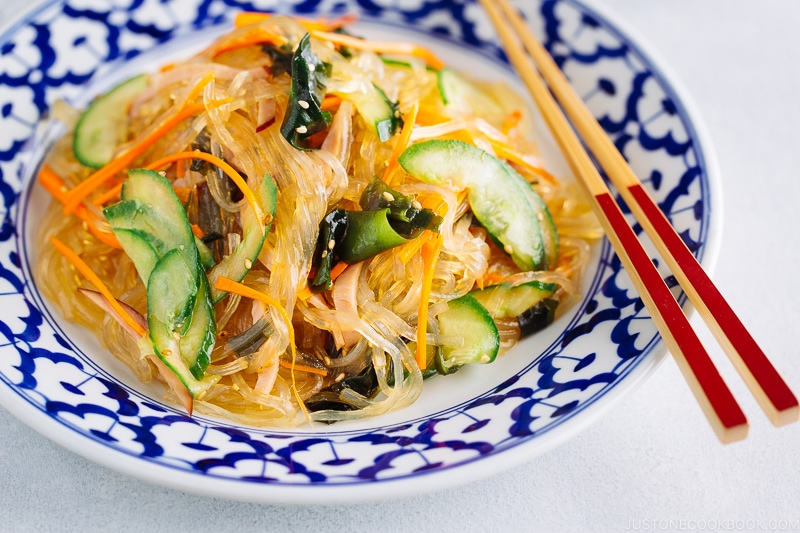
Harusame noodles (春雨), or “cellophane noodles” or “glass noodles,” are thin, translucent noodles made from starch, such as mung bean starch, potato starch, sweet potato starch, or a combination. These noodles are also eaten in Chinese, Korean, and Vietnamese cuisines. You can use them in soups, stir-fries, spring roll fillings, hot pot dishes, and salads.
Where to Buy Harusame Noodles
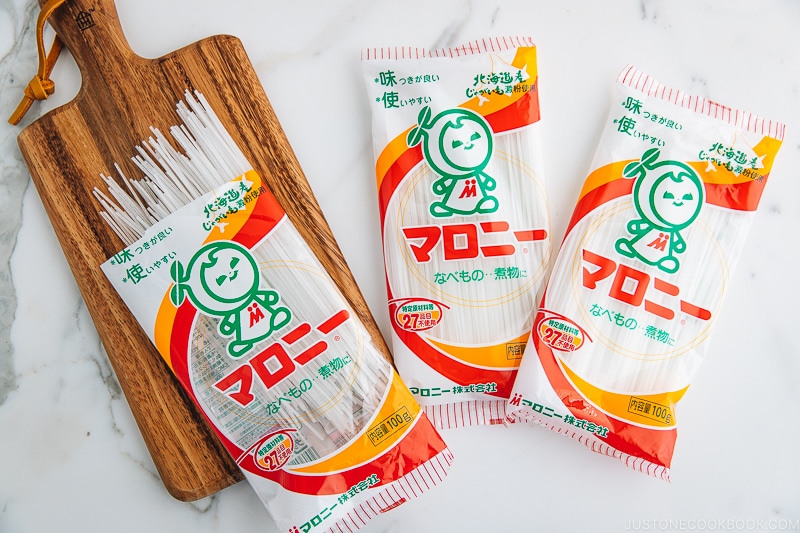
Check out your local Japanese and Asian grocery stores, and Amazon. They are sold dried and must be reconstituted in hot water before use.
Recipes Using Harusame Noodles
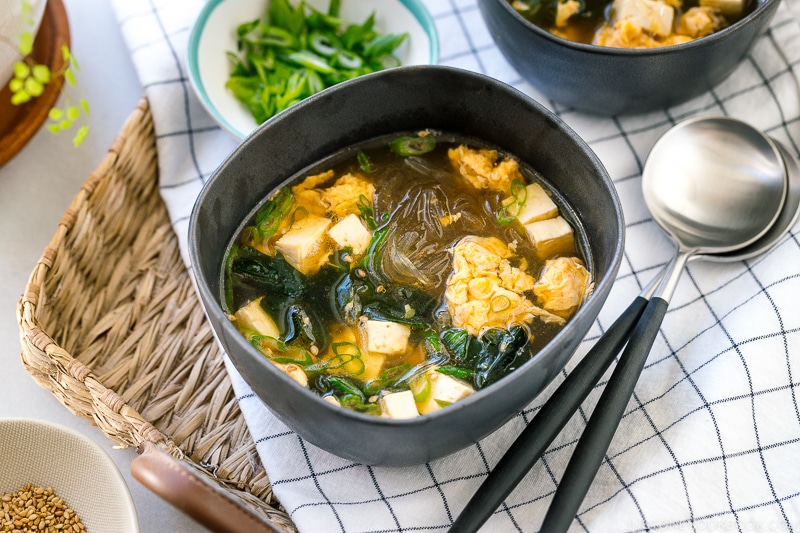

- Japanese Glass Noodle Soup (Harusame Soup) – For a quick yet light meal, you need this in your back pocket.
- Harusame Salad (Japanese Glass Noodle Salad) – I love this as a potluck dish.
- Harumaki (Japanese Spring Rolls) – Who doesn’t like crispy spring rolls filled with chicken, shrimp, shiitake mushroom, carrots, and vermicelli?
Noodle Eating Etiquette
Dining etiquette, especially noodle-eating etiquette, differs by country, so adhering to the rules can be confusing! Here are some guidelines for enjoying noodles in Japan or at a Japanese restaurant.
Noodle Slurping
Your parents may have taught you not to slurp your noodles as it’s considered poor manners. However, it’s perfectly acceptable in Japan to slurp away your udon, soba, and ramen!
Japanese noodle enthusiasts will insist that slurping improves the flavor of the noodles, helps cool them down, or allows your nasal passages to take in the delicious aromas of the broth. While not mandatory, you may receive a nod of appreciation from your Japanese neighbor as you slurp your meal. Of course, you do not need to engage in this practice if you feel uncomfortable!
Noodle slurping is reserved for noodle dishes in soup (hot or cold) and is inappropriate for non-soup dishes, such as Yakisoba, Hiyashi Chuka, and noodle salads.
Picking Up Your Noodle Bowl
It’s acceptable to lift your bowl of noodles to your face, including large bowls of ramen, udon, or small cups with dipping sauce for somen and soba. So feel free to sip away the last drop of ramen broth directly from the bowl (although the sodium content tends to be high and the calories add up, so beware!)
In Western table settings, tables and chairs are used, with the chair’s height situating the eater not too far from the plate in front. In contrast, a traditional Japanese meal is eaten on a low table, and seating is close to the ground, hence a farther distance from the table to the face.
Even in a Western table setting, lifting the bowls for easy eating is OK. This will mainly be needed when you’re about to eat something soupy or drippy, which may splatter on your shirt or table (or your neighbor’s!)
Cutting Noodles
Unlike in Korean cuisine, where diners often cut long noodles with culinary scissors, this is not practiced in Japan. So, I recommend picking up a few strands at a time to eat noodles gracefully. Don’t bite off the noodles if your mouth is full; this is bad manners.
📖 For further reading:
Wish to learn more about Japanese cooking? Sign up for our free newsletter to receive cooking tips & recipe updates! And stay in touch with me on Facebook, Pinterest, YouTube, and Instagram.
